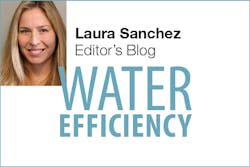From yogurt to diet sodas and low-calorie desserts, grocery market shelves today are lined with an unfathomable array of products containing sucralose. And beyond trimming calories, the artificial sweetener is being used to help identify high concentrations of potential pollutants.
Sucralose is being used as what experts call a “tracer,” or a substance that can help lead water professionals to the source of contamination. In the past, anthropogenic compounds such as caffeine, N-diethyl-meta-toluamide (DEET), and various pharmaceuticals have been used to identify the impact of human-borne pollution on bodies of water. But sucralose is an increasingly popular tracer because the compound doesn’t degrade in water treatment plants or the natural environment.
The human body doesn’t recognize the compounds in artificial sweeteners as fuel, and therefore does not use them for energy. Furthermore, these molecules are not easily broken down in wastewater treatment plants, because the microorganisms that consume dissolved compounds don’t recognize them as consumable either. Therefore, they persist and can serve as an indicator of human influence on water systems.
In fact, the compound can serve as an advanced warning. When it is detected in a river, for example, water quality managers have an opportunity to investigate what other contaminants are present and potentially threatening the waterway’s health and manage them more effectively.
In a 2011 study, researchers found that sucralose actually outperformed several other compounds as a potential indicator of wastewater. “While several compounds were detected in all of the wastewater effluent samples, only sucralose was consistently detected in the source waters with known wastewater discharges, absent in the sources without wastewater influence, and consistently present in septic samples. All of the other compounds were prone to either false negatives or false positives in the environment,” the study explains.
What are your thoughts on the use of sucralose to signal high concentrations of wastewater in waterways? Does your organization use tracers?
